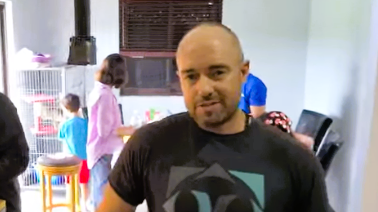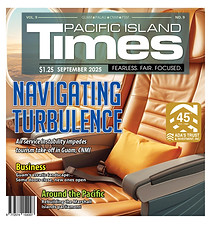Guam isn't tsunami-proof. 'We have just been very lucky,' meteorologist says
- Admin

- Jul 31
- 3 min read
Updated: Jul 31

By Jayvee Vallejera and Mar-Vic Cagurangan
The magnitude-8.8 earthquake in Russia’s Far East early Wednesday triggered tsunami warnings across a broad section of the Pacific, including Japan, Hawaii and the west coast of the United States, followed by the eruption of an active volcano on the Kamchatka peninsula.
Fortunately, the day ended uneventfully for Guam and the Northern Mariana Islands. Despite the tsunami advisory, which was cancelled by 6:45 p.m., the islands were hit by waves much smaller than predicted.
Several Guam residents were comforted by the widely accepted belief that the Marianas Trench makes the island tsunami-proof.
However, Landon Aydlett, a warning coordination meteorologist at the U.S. National Weather Service, debunked this theory as a myth.
“That's a very common spread myth around the region. In reality, we've been very lucky. We've been very lucky that we've not had a major tsunami impact the islands,” Aydlett said.
Guam is not free from the threats of this nature, he said, noting that a number of tsunamis have made their way to the island through the years.

“But all the impacts have been very small, including the one in 2011, where we had an 18-inch tsunami with that 2011 Japanese earthquake,” Aydlett said.
“That hit us at low tide, so we had no effects, but we went from low tide to what looked like high tide, and we reverberated several times in a couple of hours.”
The Marianas Trench does not serve as Guam’s shield from a tsunami, Aydlett said.
On the contrary, he said, it can be a tsunami source for the island.
The crescent-shaped Mariana Trench is the deepest part of the world's oceans, located east of the Mariana Islands. Challenger Deep, the deepest point in the trench, is located at a depth of about 36,000 ft.
“If we had a large earthquake in the trench, that could potentially generate a significant tsunami for us locally, and the waves could arrive within 10 or 15 minutes," Aydlett said.
He advised Guam residents to always heed tsunami alerts and stay out of the water.
“We do have to keep in the back of our minds that maybe a little bit larger wave could be coming at us,” he said.
Read related story
In Russia, the earthquake, which was initially estimated at magnitude 8 but later adjusted to 8.8, was considered to be among the four strongest earthquakes this century, according to the U.S. Geological Survey.
It was centered off the coast of the Kamchatka Peninsula in Russia’s Far East. It hit the area early Wednesday local time.
The earthquake occurred along the Pacific Ring of Fire, the ring of seismic faults around the Pacific Ocean where several tectonic plates meet. The majority of the world’s largest quakes occur in that region, which is also home to many volcanoes.
The BBC reports that tsunami waves of more than 5 meters high struck the town of Severo-Kurilsk near the quake’s epicenter, flooding the port and washing away more than a dozen boats. No deaths were reported, according to the Kremlin.
A tsunami height of 3 to 4 meters (10 to 13 feet) was recorded in Kamchatka, according to an Associated Press report, while tsunami waves about 2 to 5 feet high reached San Francisco early Wednesday. Other areas saw smaller waves.
In North America, tsunami warnings were issued along the California coast to the Oregon border, while advisories were issued in coastal areas of Washington and Oregon, the Alaska Peninsula, the Aleutians and British Columbia.
In Hawaii, AP reported that tsunami waves reached Oahu, Hawaii’s most populous island, but no damage was recorded. Hawaii has downgraded its tsunami warnings to advisories.
Initial reports from Japan indicate that there was no safety impact on nuclear power plants along Japan’s Pacific coast, although there were reports of about a three-foot sea level rise in some areas.
AP said that damage and evacuations were reported in the Russian regions nearest the quake’s epicenter, and officials declared a state of emergency in several areas.
British online newspaper The Independent reports that several people were injured, but none seriously, and no major damage has been reported so far from the earthquake.
With the danger appearing to diminish in most areas within hours, tsunami warnings were downgraded, but possible aftershocks from the Russia earthquake prompted many to keep their advisories in place. A tsunami warning remained in effect for parts of the northern California coast.
Subscribe to
our digital
monthly edition








